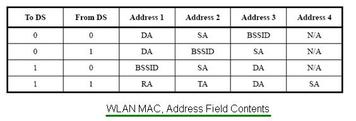802.11a vs 802.11p: WLAN Standards Comparison
Advertisement
This page dives into the differences between WLAN standards 802.11a and 802.11p. The 802.11p standard is specifically designed for vehicle-to-vehicle (V2V) and vehicle-to-infrastructure (V2I) communication.
It operates in the 5.9 GHz band, utilizing 75 MHz of frequency spectrum. You might also know it by other names such as Dedicated Short Range Communications (DSRC) and Wireless Access in Vehicular Environments (WAVE). The network formed by 802.11p compliant devices is known as a VANET, which stands for Vehicular Ad Hoc Network.
The IEEE 802.11p standard defines the Physical (PHY) and Media Access Control (MAC) layers, while the upper layers are defined by IEEE 1609.
Key Differences in PHY/MAC Layers
There are significant changes in the 802.11p PHY/MAC layer compared to the 802.11a PHY/MAC. It defines functions and services that aid in operating 802.11p compliant stations in challenging and rapidly changing environments.
Comparison Table: 802.11a vs 802.11p
| Specifications | 802.11a | 802.11p |
|---|---|---|
| Data rate | 6, 9, 12, 18, 24, 36, 48, 54 Mbps | 3, 4, 5, 6, 9, 12, 18, 24, 27 Mbps |
| Modulation | BPSK, QPSK, 16QAM, 64QAM | Same as 802.11a |
| Coding rate | 1/2, 1/3, 3/4 | Same as 802.11a |
| Number of subcarriers | 52 | 52 |
| OFDM symbol duration | 4 µs | 8 µs |
| Guard Time | 0.8 µs | 1.6 µs |
| Preamble duration | 16 µs | 32 µs |
| Subcarrier Spacing | 0.3125 MHz | 0.15625 MHz |
 RF
RF



